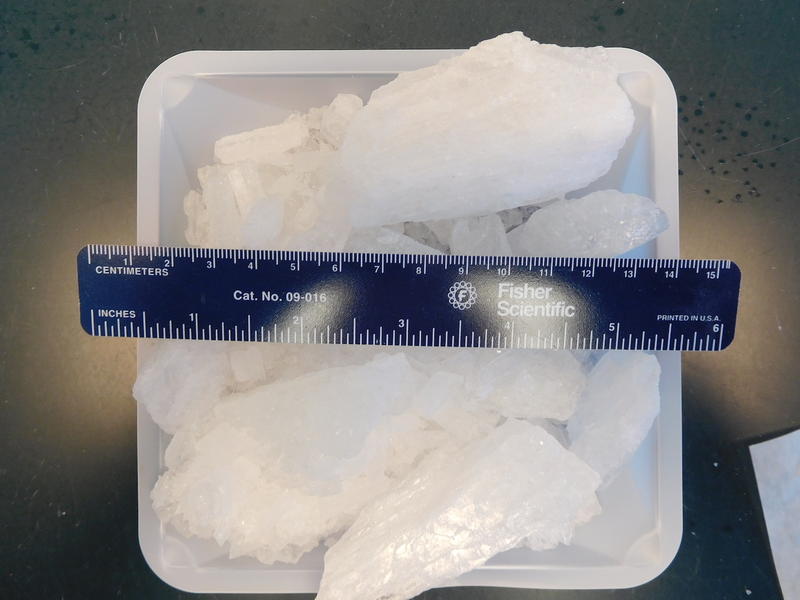
Nineteen people were charged last week after a coordinated drug bust in Grundy County. Most of the defendants face charges related to distribution of methamphetamine — a drug that has flown below the radar amid the deadly opioid epidemic.
A decade ago, meth was the big target for law enforcement. Now it’s primarily heroin and fentanyl, which are far more fatal. But meth never left, though how it’s made has changed.
“There’s a lot of meth out there,” says special agent-in-charge Tommy Farmer of the Tennessee Bureau of Investigation.
These days, the potent and addictive drug is usually smuggled in from Mexico in bulk rather than produced in small batches in “mom-and-pop” labs using cold medicine and household chemicals.
Farmer cites a more than 80 percent reduction in meth lab seizures compared to 2010, when Tennessee
led the nation. But he says the TBI crime lab now has many more forensic requests for meth. So while there are fewer meth labs around Tennessee, drug agents believe there may actually be just as much — or more — meth being sold on the street.

One indicator of its prevalence, he says, is its low price.
“I’ve never seen methamphetamine in bulk on the street as cheap as it is right now,” Farmer says.
The
undercover operation in the remote areas around Grundy County this week was dubbed “Operation CamelStraw” — as in the straw that broke the camel’s back. The defendants range from 23 to 55 years of age.
In January, TBI drug agents
rounded up a dozen people in neighboring Franklin County, though mostly on opioid-related charges. In November 2018, law enforcement
charged four people in East Tennessee’s Monroe County with distributing meth.


